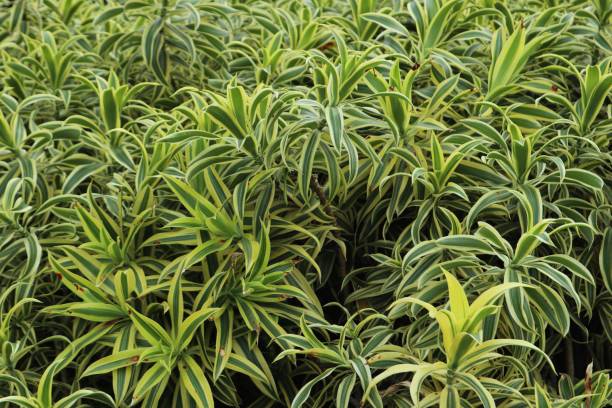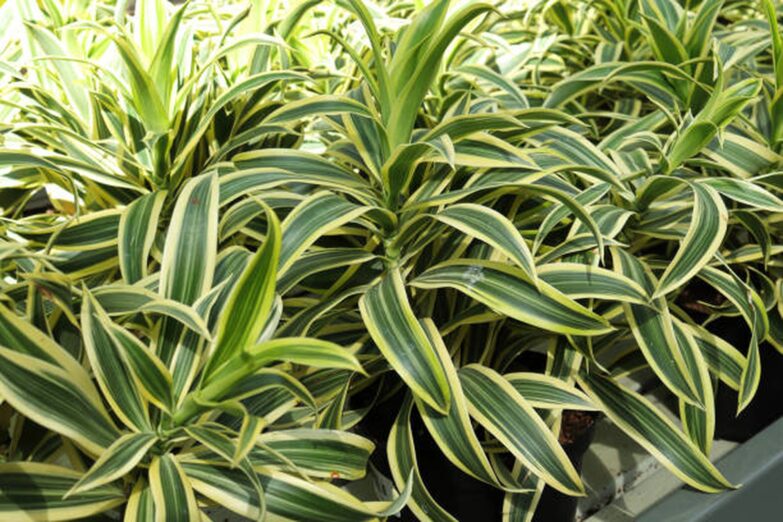The Song of India Plant (Dracaena reflexa var. angustifolia) is an eye-catching, evergreen shrub that adds a unique touch of beauty to any home or garden. Its vibrant, variegated leaves and striking growth habit make it an excellent choice for those looking to elevate their indoor plant collection. In this guide, we will explore the art of growing the Song of India Plant, discussing its origins, care requirements, and propagation techniques.
Understanding the Song of India Plant
Origins and Characteristics
Native to the Indian Ocean islands, Madagascar, and Mauritius, the Song of India Plant is known for its striking foliage and graceful growth habit. A member of the Dracaena genus, it features slender, slightly curved leaves that boast vibrant green and yellow variegation. The plant can grow up to 6 feet tall indoors, and its stems tend to arch gracefully as it matures.
Popular Uses
The Song of India Plant is highly versatile and can be used in a variety of ways to enhance your home or garden. It can be grown as a standalone houseplant or potted in a container for a stunning patio or balcony display. Additionally, it can be incorporated into mixed plantings or used to create an attractive hedge in suitable climates.
Mastering the Art of Song of India Plant Care
Caring for the Song of India Plant involves providing it with the appropriate light, water, temperature, and nutrients, as well as ensuring that it has proper soil and humidity conditions. With a bit of attention to these factors, you can help your plant flourish.
Light Requirements
The Song of India Plant thrives in bright, indirect light. Direct sunlight can scorch its leaves, so it’s best to keep it near a window that receives filtered light. In lower light conditions, the plant may lose some of its variegation, but it will still grow.
Watering and Feeding
Water your Song of India Plant when the top inch of the soil feels dry to the touch. Overwatering can lead to root rot, so be sure to use a well-draining potting mix and allow the excess water to drain from the container. During the growing season (spring and summer), feed your plant with a balanced liquid fertilizer once a month.
Temperature and Humidity Preferences
This tropical plant prefers temperatures between 65 and 80°F (18 to 27°C) and is not frost-tolerant. It also enjoys high humidity, so consider placing it on a pebble tray filled with water, using a humidifier, or misting it regularly.
Soil Requirements
The Song of India Plant grows best in a well-draining, loamy potting mix. A mix that contains equal parts potting soil, peat moss, and perlite or sand is ideal.
Propagation Techniques

There are several methods for propagating the Song of India Plant, including stem cuttings, air layering, and division. Each of these methods offers its own advantages and challenges.
Stem Cuttings
Stem cuttings are the most common method for propagating the Song of India Plant. Cut a healthy stem with at least 3 to 4 leaves, removing any lower leaves that would be submerged in water or soil. Place the cutting in a jar of water, or plant it directly into moist potting mix. In either case, keep the cutting in a warm, bright location until roots develop, usually within a few weeks.
Air Layering
Air layering is another propagation technique that works well for the Song of India Plant. This method involves making a cut in a healthy stem of the plant, wrapping it in moist sphagnum moss, and covering it with plastic wrap. After a few weeks, roots should develop at the site of the cut. At this point, the new plant can be cut off from the parent plant and potted up.
Common Issues and Solutions
Like any houseplant, the Song of India Plant can encounter a few common issues. Understanding these problems and how to address them will keep your plant healthy.
Pests and Diseases
Common pests that can affect the Song of India Plant include spider mites, mealybugs, and scale. Regularly inspect your plant for these pests. If any are found, treat the plant with an appropriate insecticidal soap or pesticide. Overwatering can lead to root rot, a serious disease. To prevent this, ensure the plant is not left sitting in water, and that the soil drains well.
Leaf Browning or Yellowing
If the leaves of your Song of India Plant start to turn brown or yellow, it could be due to overwatering, underwatering, or exposure to direct sunlight. Adjust your care routine accordingly, and the plant should recover.
Conclusion
Cultivating the Song of India Plant is truly an art form. Its vivid foliage and elegant growth pattern make it a standout addition to any indoor plant collection. While it may require some attention to detail in its care, the rewards are well worth the effort. With the right knowledge and care techniques, you can successfully grow and enjoy this beautiful, tropical plant in your own home or garden.

